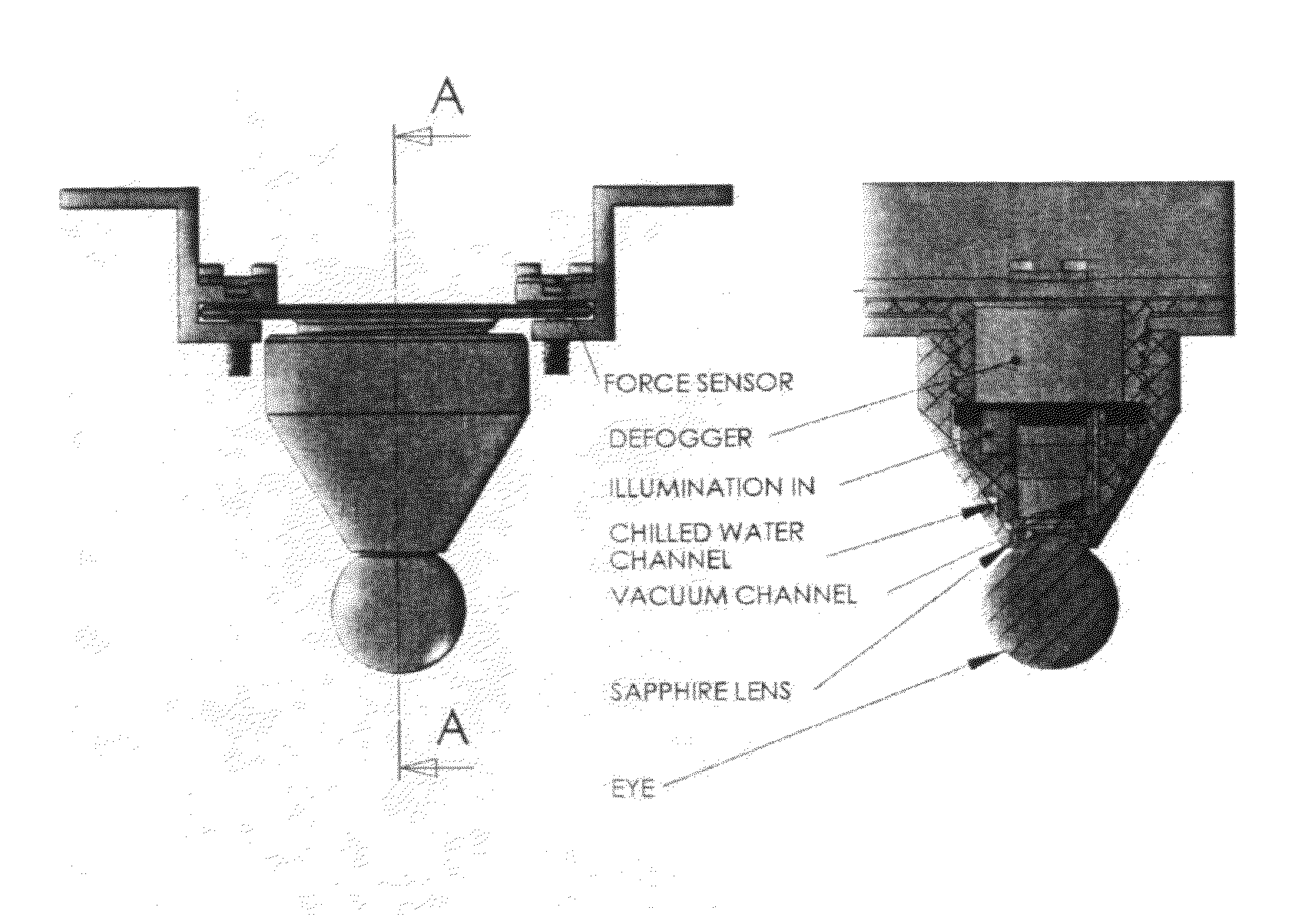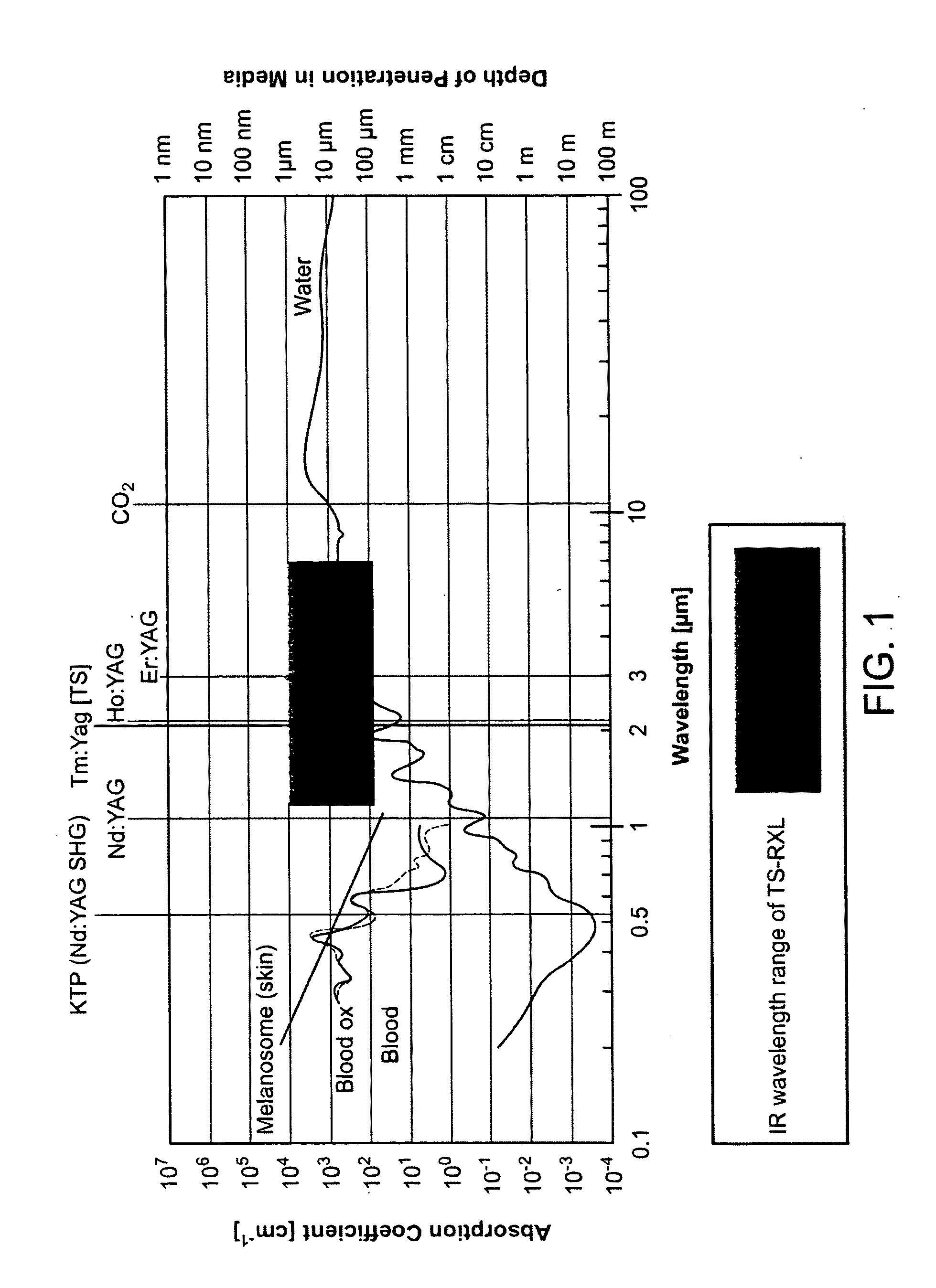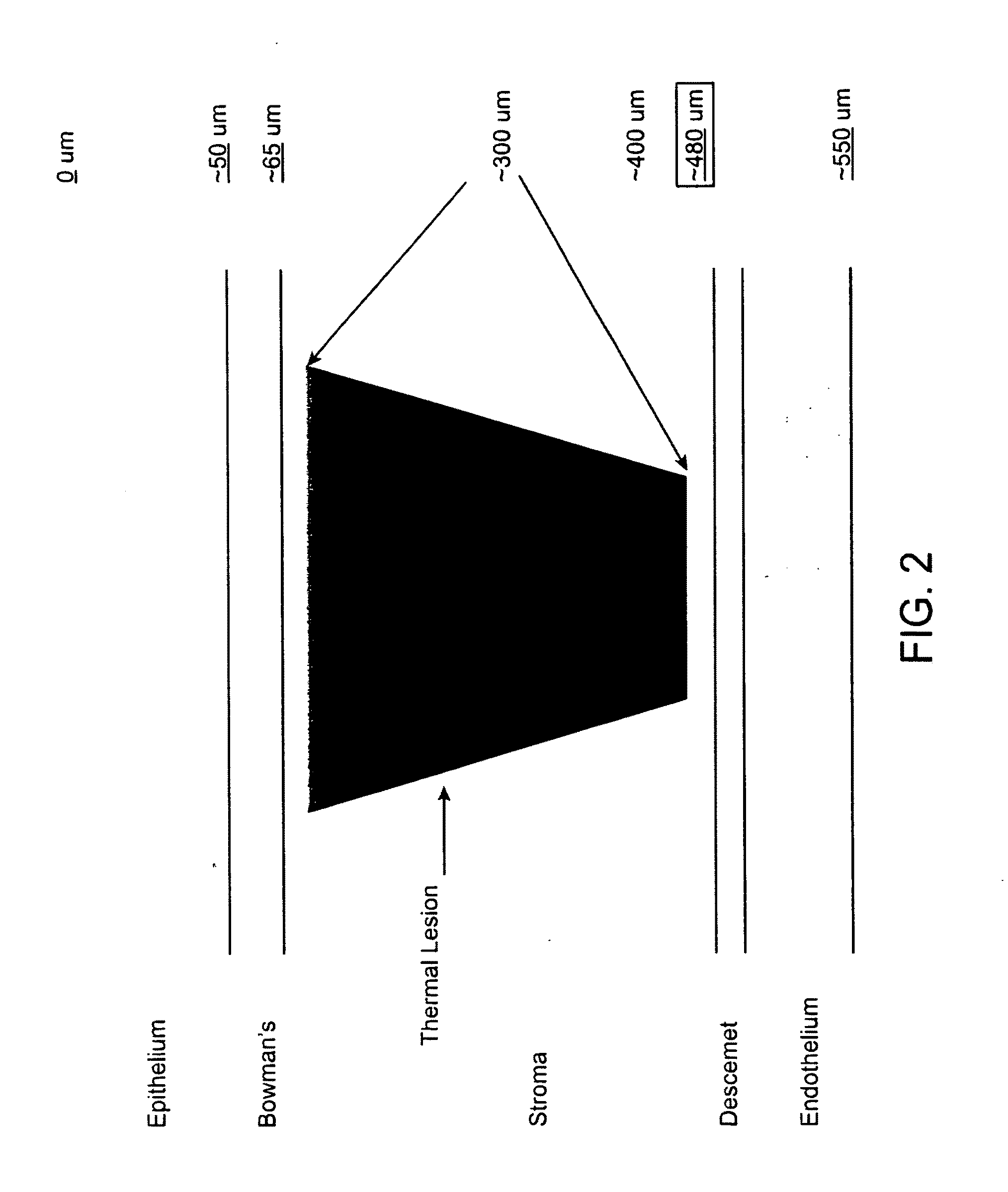Method and apparatus for treatment of ocular tissue using combined modalities
a combined modality and ocular tissue technology, applied in the field of ocular tissue apparatus and methods, can solve the problems of poor visual acuity, blu'rring of vision, use of rigid gas permeable lenses, etc., and achieve the effect of promoting corneal reshaping and rapid cross-linking
- Summary
- Abstract
- Description
- Claims
- Application Information
AI Technical Summary
Benefits of technology
Problems solved by technology
Method used
Image
Examples
example 1
[0083]Parameters: laser beam scan speed was at 0.4 mm / sec, thermal power at 500 mW, spot diameter at 0.5 mm, sapphire at 8 degrees C.
[0084]Outcomes:[0085]lesion center peak temperature at 200 μm depth from sapphire is at 62 degrees C. steady state;[0086]lesion peak temperature at 100 μm from sapphire is 51 degrees C.;[0087]lesion width in direction of motion is at 45 μm and 30 μm perpendicular to direction of motion; and[0088]volumetric heating of over 50 degrees C. occurs for 110 msecs.
example 2
[0089]Parameters: laser beam scan speed at 0.5 mm / sec, thermal power at 500 mW, spot diameter at 0.5 mm, sapphire at 8 degrees C.
[0090]Outcomes:[0091]lesion center peak temperature at 200 μm depth from sapphire is at 55 degrees C. steady state;[0092]lesion peak temperature at 100 μm from sapphire is 47 degrees C.;[0093]lesion width in direction of motion is at 45 μm and 25 μm perpendicular to direction of motion; and[0094]volumetric heating of over 50 degrees C. occurs for 50 msecs.
example 3
[0095]A faster moving laser beam was used to shorten the treatment time. In order to raise the temperature without increasing the laser power the sapphire temperature was increased to 18 degrees C.
[0096]Parameters: laser beam scan speed at 0.7 mm / sec, thermal power at 500 mW, spot diameter at 0.5 mm, sapphire at 18 degrees C.
[0097]Outcomes:[0098]lesion center peak temperature at 200 μm depth from sapphire is at 55 degrees C. steady state;[0099]lesion peak temperature at 100 μm from sapphire is 51 degrees C.;[0100]lesion width in direction of motion is at 45 μm and 30 μm perpendicular to direction of motion; and[0101]volumetric heating of over 50 degrees C. occurs for 50 msecs.
PUM
 Login to View More
Login to View More Abstract
Description
Claims
Application Information
 Login to View More
Login to View More - R&D
- Intellectual Property
- Life Sciences
- Materials
- Tech Scout
- Unparalleled Data Quality
- Higher Quality Content
- 60% Fewer Hallucinations
Browse by: Latest US Patents, China's latest patents, Technical Efficacy Thesaurus, Application Domain, Technology Topic, Popular Technical Reports.
© 2025 PatSnap. All rights reserved.Legal|Privacy policy|Modern Slavery Act Transparency Statement|Sitemap|About US| Contact US: help@patsnap.com



